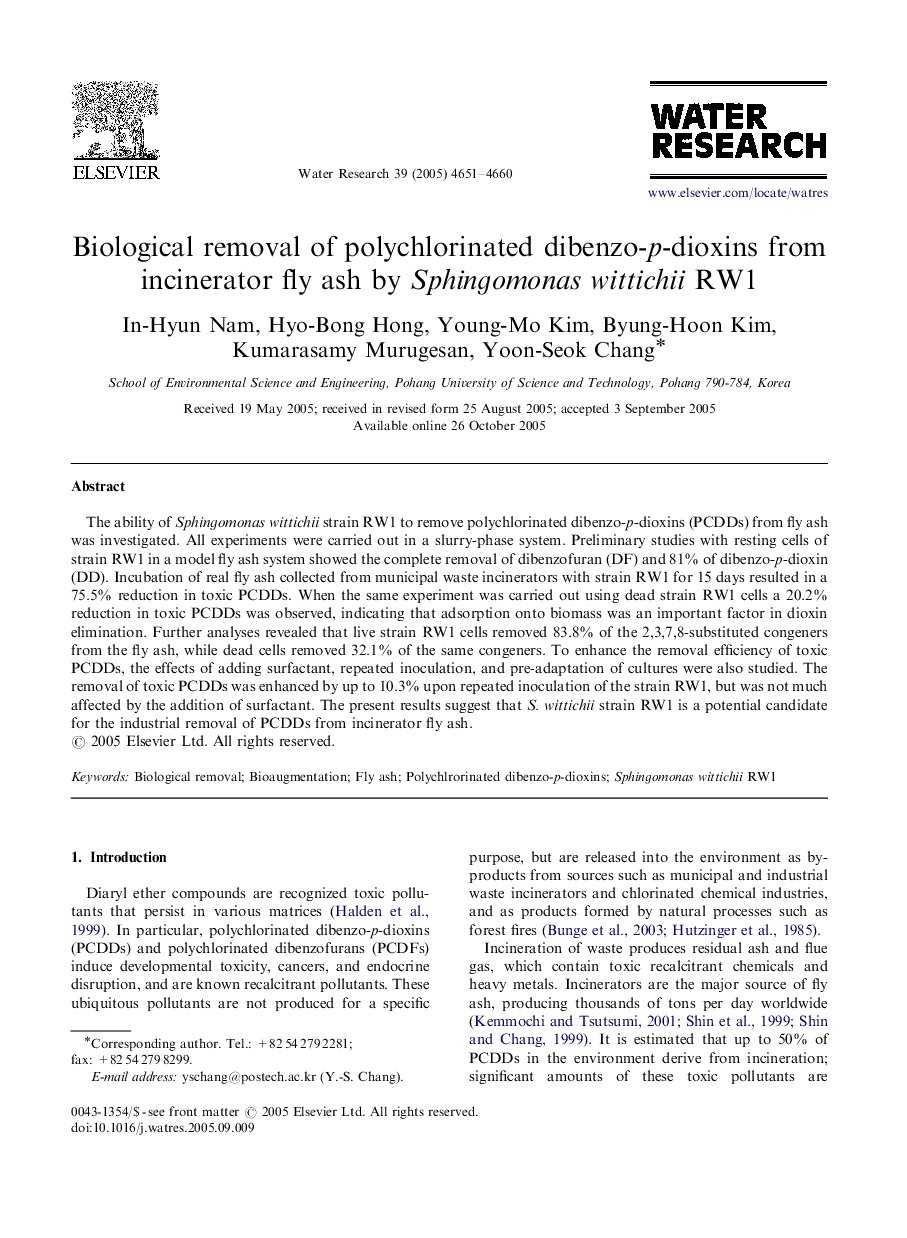| Article ID | Journal | Published Year | Pages | File Type |
|---|---|---|---|---|
| 4484829 | Water Research | 2005 | 10 Pages |
The ability of Sphingomonas wittichii strain RW1 to remove polychlorinated dibenzo-p-dioxins (PCDDs) from fly ash was investigated. All experiments were carried out in a slurry-phase system. Preliminary studies with resting cells of strain RW1 in a model fly ash system showed the complete removal of dibenzofuran (DF) and 81% of dibenzo-p-dioxin (DD). Incubation of real fly ash collected from municipal waste incinerators with strain RW1 for 15 days resulted in a 75.5% reduction in toxic PCDDs. When the same experiment was carried out using dead strain RW1 cells a 20.2% reduction in toxic PCDDs was observed, indicating that adsorption onto biomass was an important factor in dioxin elimination. Further analyses revealed that live strain RW1 cells removed 83.8% of the 2,3,7,8-substituted congeners from the fly ash, while dead cells removed 32.1% of the same congeners. To enhance the removal efficiency of toxic PCDDs, the effects of adding surfactant, repeated inoculation, and pre-adaptation of cultures were also studied. The removal of toxic PCDDs was enhanced by up to 10.3% upon repeated inoculation of the strain RW1, but was not much affected by the addition of surfactant. The present results suggest that S. wittichii strain RW1 is a potential candidate for the industrial removal of PCDDs from incinerator fly ash.
